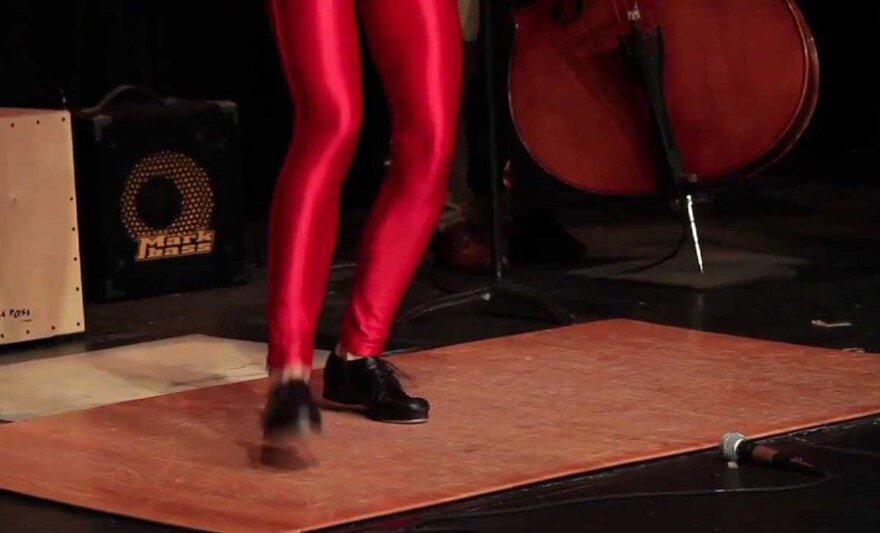Tap dancer Pam Hetherington says tap can be the visual representation of any kind of music. And jazz tap provides the opportunity for the dancer to reflect the emotions and story inspired by a live jazz combo. A choreographer and a teacher, she says she’s obsessed with tap’s percussive possibilities: hard-driving, soft and sweet, and in between.

A Philadelphia native in her 30s, Hetherington started tap dancing around the age of three, and began focusing on jazz tap around 2000. She studied in New York City under the direction of Heather Cornell, choreographer and founder of Manhattan Tap, and conceived her venture 'Take It Away Dance'in 2008 as a Philadelphia-based forum for tap productions and jams, master classes, and collaborations in which tap figures prominently.
Since then, Take It Away Dance has spearheaded dozens of projects including Hetherington’s work with The Jazz Tap Quartet, in which the dancer is as much a member of the band as the saxophonist, bassist, and vocalist.
Jazz tap dancers, including Pam Hetherington and Heather Cornell, will be featured at a performance of nine works on June 6th at the Gershman Y in Center City, Philadelphia.
Radio Script
It’s not Fred Astaire and Ginger Rogers, or the Rockettes. WRTI’s Meridee Duddleston has more about the rhythm of tap dance on the edge of innovation.
MD: When tap dance was everywhere – on stage, with big bands and in the movies, at jazz clubs –an earthy, heavy-heeled tap developed in Philadelphia because concrete - not a wood stage - provided the soundscape. Tap dancer Pamela Hetherington, says while women did their tapping mostly in chorus lines - from the 1930s to around the '60s. “Street tap” was a masculine challenge played out on city corners…before the days of smartphones or YouTube.
PH: Street tap is exactly what it sounds like. It’s a very competitive forum, where you’re trading steps and you’re trying to beat your opponent. It was actually born on the streets of Philadelphia. There’s a story about how tap dancers would travel to different corners and they would battle each other on the corners - and the corner that you wanted to get to was Broad and South streets.
MD: Well over a century later, Hetherington says dancing with a live jazz ensemble has the same kind space for improvisation. Jazz tap is a scary artistic proposition, and not every move can easily be captured on camera.
PH: Some of the first JAMS that I went to, I just had to force myself to get up there and do it. And again, some musicians have never seen tap or worked with tap, so they don’t know what to do either.
MD: Hetherington choreographs, performs, and teaches tap, and she says one of the hardest things about performing jazz tap is thinking of herself as a member of the band – It’s tap in a new form.
PH: I sort of have a sense of what the tune will be, but I don’t know what the solos will be. I don’t know where exactly it’s going to go on stage - 99 percent of the time.
MD: And so the jazz tap dancer reaches inside herself for the percussive and melodic groove she’s hearing.

